Here’s how to take a break from brewing kombucha without killing your SCOBY, from short pauses to long term breaks (+ how to make a SCOBY hotel).

Anyone who has been brewing kombucha for time will agree…our kombucha SCOBY becomes a bit like a pet. We love it, we nurture it, we might even name it (????????♀️).
So what can you do to make sure Peggy (err…your SCOBY) doesn’t die while you’re on vacation? Here’s how to take a break from brewing kombucha without killing your SCOBY so she’ll live for years to come!
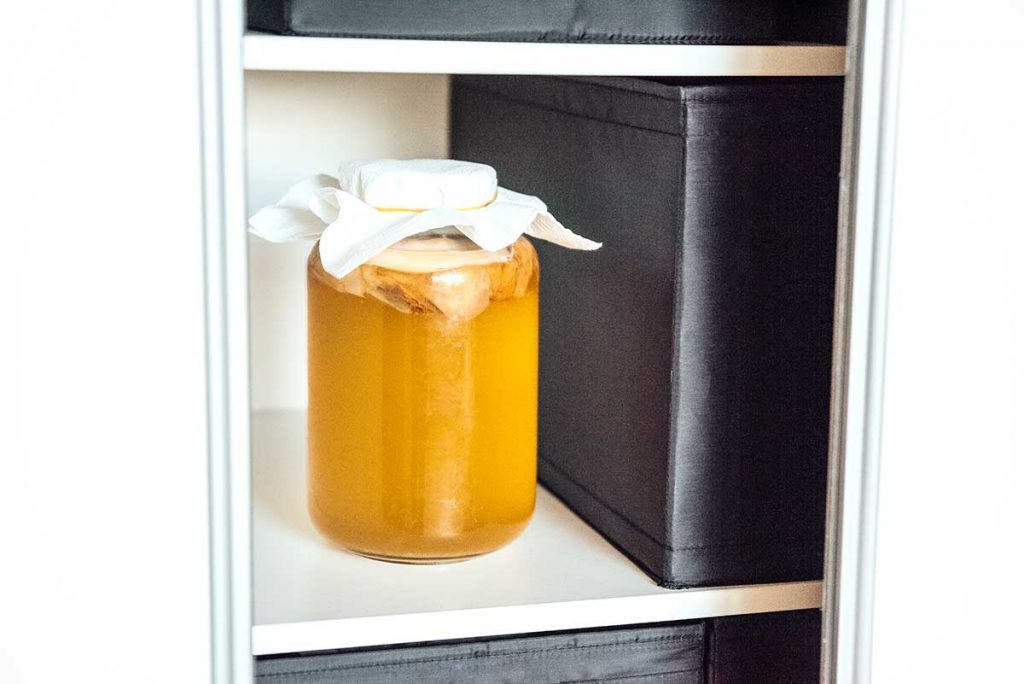
Storing a SCOBY between brews (1 week)
Let’s say you bottled your first fermentation kombucha, but you don’t have time to start your next first fermentation batch. You’ll need to make sure your SCOBY is stored properly until you have a chance to start your next batch.
Fortunately, this is super easy – just leave it. Leave your SCOBY and some first fermentation kombucha (i.e. your starter for the next batch) in the jar at room temperature for up to a week. (Learn the best places to store kombucha).
Short term SCOBY storage (2 to 6 weeks)
So you’re going on vacation for a few weeks and don’t want your SCOBY to die while you’re gone. For taking breaks up to 6 weeks, just feed it and leave it.
A normal first fermentation can run for 4 weeks (if the temperature is not too warm), but this can be extended to 6 weeks if needed. Start a new batch of first fermentation right before you go, which will provide enough food and nutrients for the SCOBY to eat while you’re gone.
After 6 weeks, the resulting liquid will be very acidic and vinegar tasting, but this acidity is what will protect the SCOBY from mold. Either discard the liquid or use it as a vinegar in cooking (and of course, keep some to use as a powerful starter for your next batch).
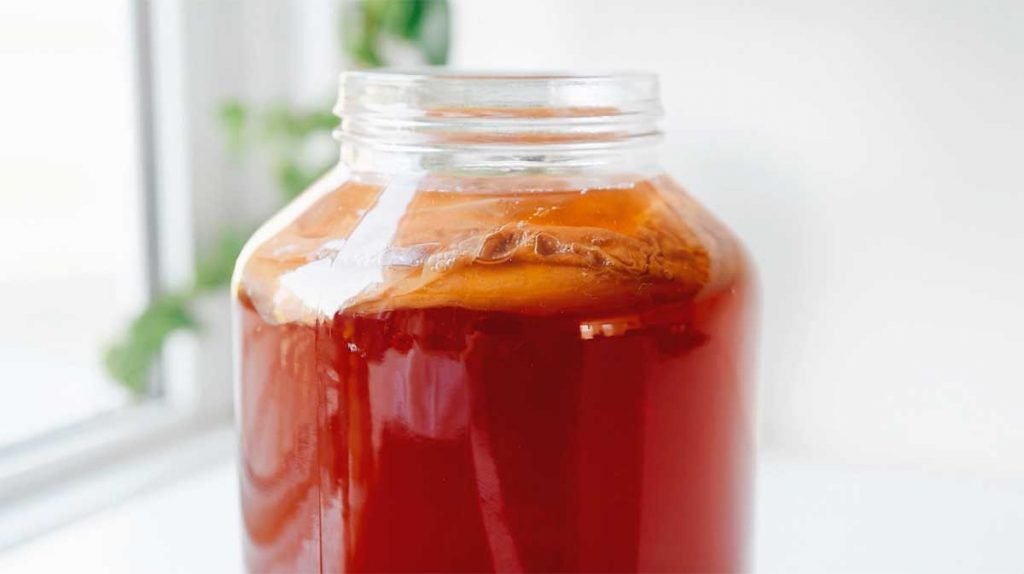
Long term SCOBY storage (6 to 12 weeks)
For taking brewing breaks longer than 6 weeks, your SCOBY is going to want occasional feedings. Brew a fresh batch of first fermentation kombucha as you would with short term SCOBY storage.
Every 6 weeks or so, drain off some of the acidic liquid and replace it with an equal amount of sweet tea (the same ratios of sugar and tea that we use in the master kombucha recipe).
If you are pressed for time, you can add just plain sugar (1 cup per gallon of kombucha), but this should only be done as a last resort, as the kombucha needs nutrients in the tea as well.
If possible, store the kombucha somewhere on the cool side for long term storage, 60-65°F (16-18°C). This will slow fermentation and allow you to stretch the time between feedings, while keeping the kombucha in a safe temperature range.
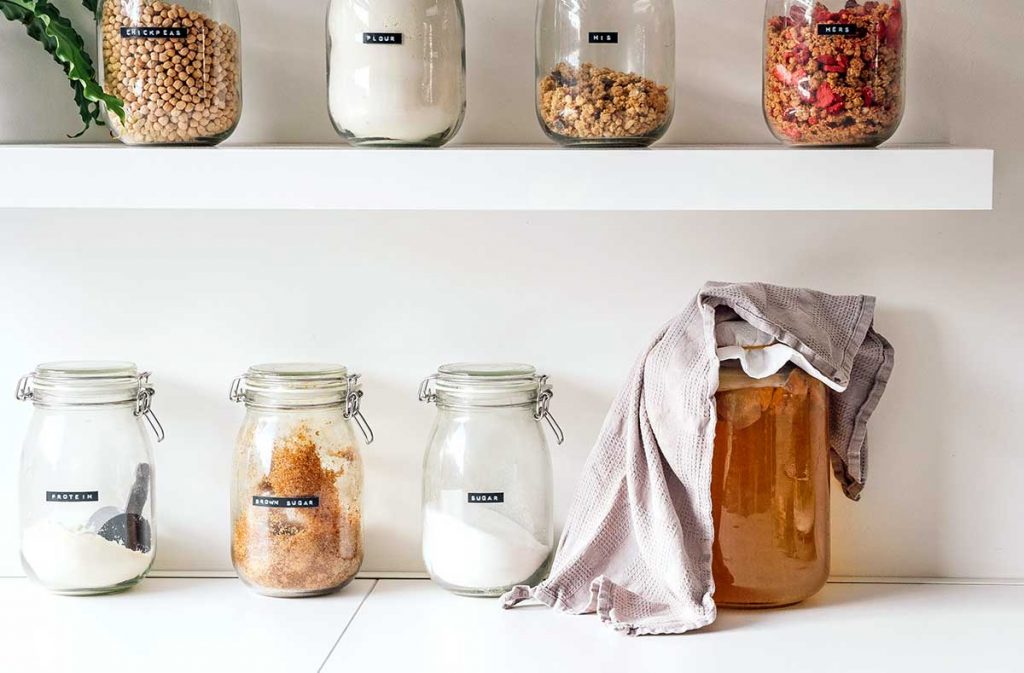
How to Make a SCOBY Hotel
You may find yourself with more SCOBYs than you can use at once. In this case, you might want to set up a SCOBY hotel.
As the name suggests, a SCOBY hotel is just a jar your extra SCOBYs can hangout until you’re ready to use them.
To make a SCOBY hotel, brew a fresh batch of first fermentation kombucha (with the same ratios of sugar, tea, and starter kombucha as in our master recipe). Cover the SCOBY hotel with a breathable cloth (no lid), then just add SCOBYs to the jar whenever you have extras. Every 4 to 6 weeks, drain off some of the liquid in the SCOBY hotel and replace it with sweetened tea so the SCOBYs can continue to have food and nutrients.
When you’re ready to use a SCOBY from the hotel, simply pluck it from the hotel (along with some of the powerful liquid it’s sitting in, which can be used as a starter). Get the full guide to SCOBY hotels here.
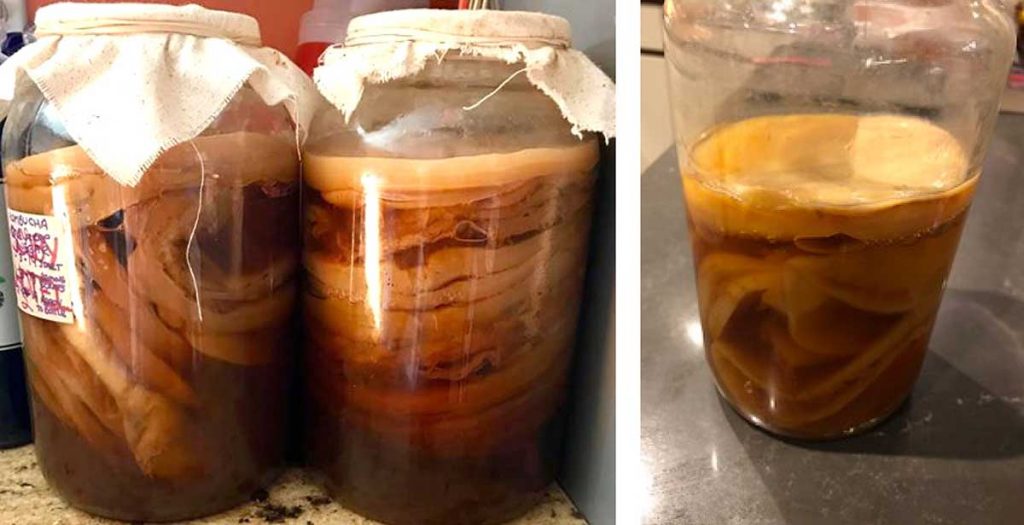
Things to never do when storing a kombucha SCOBY
While taking a break from brewing kombucha is easy, there are two things you should make sure don’t happen:
- Do not refrigerate your SCOBY. Cold temperature greatly increase the chance of mold and will do more harm than good.
- Do not let your SCOBY climb out. Sometimes SCOBYs like to climb up the jar and out of the liquid. If this happens, just swirl it back into the liquid so that it remains in contact with the acidic kombucha. This is its natural protection from mold!
To dehydrate or not?
While some brewers have success dehydrating SCOBYs for long (loooong) term storage, I don’t recommend this. It has a high failure rate and is often more effort than it’s worth.
If you’re taking an extended break, just bottle some strong kombucha from a first fermentation and store it in the fridge. Kombucha (without a SCOBY) will last for many months in the fridge.
When you’re ready to brew again, you’ll have a powerful starter to grow a new SCOBY from.
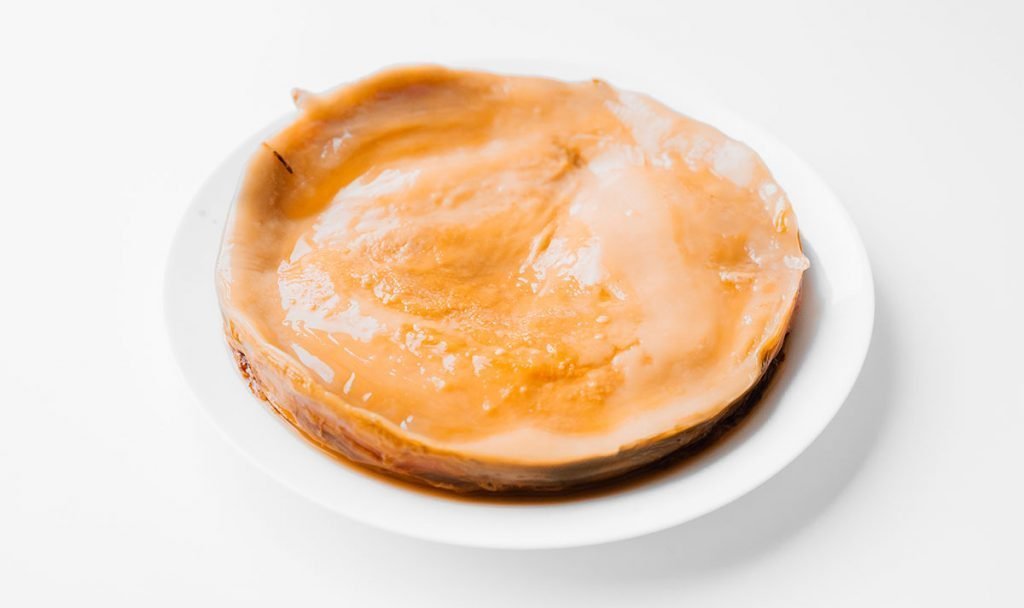



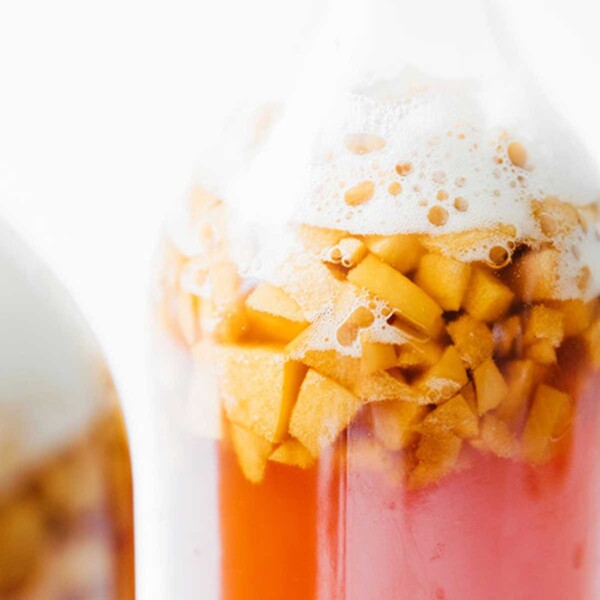
Oh, sorry Sarah!
I’m being lazy as I’ve. Just seen loads of advice on your site for flavourings. Looking forward to experimenting.
Onto our fifth batch. Scoby grows alarmingly fast! Recipe I’m using is 2L green tea ( 10 bags for 30 mins) 120g soft brown cane sugar. It’s ok but I could get bored with the dark brown colour and fizzy tea taste. Any quick tips to vary the taste and lighten the colour?
Love that you’re five batches in—sounds like your SCOBY is thriving! To lighten the color and mix things up, try switching to white sugar or evaporated cane juice—they’ll ferment just as well but won’t darken the tea as much. You could also brew with white or jasmine green tea instead of standard green, which gives a cleaner, more delicate flavor. For taste, toss in some lemon zest, fresh herbs (like mint or basil), or fruit juices during second fermentation—quick, easy, and super customizable. You’re in the fun experimentation zone now!
Can we freeze the scoby?
No that’s not recommended, it would likely kill the good bacteria and yeast.
Hi,
I need to take regular breaks from brewing so my fridge doesn’t fill up with kombucha! (only I drink it.) Seems like I just need to pour off liquid and add sweet tea once a month or so. But how much? Just one cup, enough so the SCOBY is submerged?
Thanks!
Claire
Hey Claire—totally get it! A SCOBY hotel is perfect for taking breaks. You’re right: about once a month, just pour off some of the old liquid (you can even save it as extra starter) and add fresh, cooled sweet tea. You’ll want to add just enough to keep the SCOBY fully submerged, usually 1 to 2 cups is plenty. This keeps the culture fed and happy until you’re ready to brew again!
Hi! thankyou for your resources!
I just finished a first fermentation and leave for a holiday. can i refridgerate this batch, and take it out when i come back to let it second ferment?
or do i add fruit now and leave it in the fridge for these 3 weeks? im afraid of explosions as all my flip tops are in use and only have storing jars with rubber seals and regular jars! I’d love to hear your recommendation
You’re so welcome! So you don’t want to refrigerate during first fermentation—cold temps will pause the fermentation and stall out your SCOBY. Instead, just leave your F1 kombucha in its jar (with a cloth cover) at room temp while you’re gone. It’ll keep fermenting slowly and will probably be nice and tangy when you return. Once you’re back, you can strain it, add fruit, and do the second fermentation (F2). And good call on the bottles—definitely wait until you have pressure-safe flip tops before doing F2, since jars with rubber seals or regular lids aren’t safe for carbonation buildup. Enjoy your trip!
Can I use loose plastic screw lid during F1? Pros and cons?
I wouldn’t recommend using a loose plastic screw lid during F1. Kombucha needs airflow to ferment properly, and a loose lid can allow contaminants (like fruit flies or mold spores) in while not providing the consistent oxygen flow that a breathable cloth cover does. You’re better off using a tightly woven cloth or paper towel secured with a rubber band—this keeps your brew safe and lets it breathe the way it needs to.